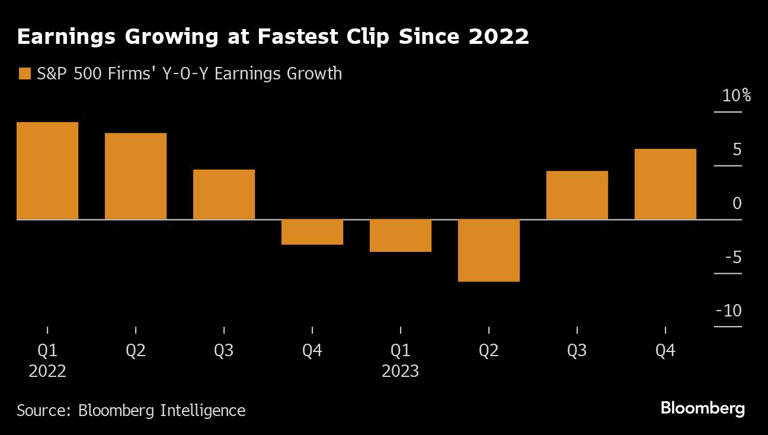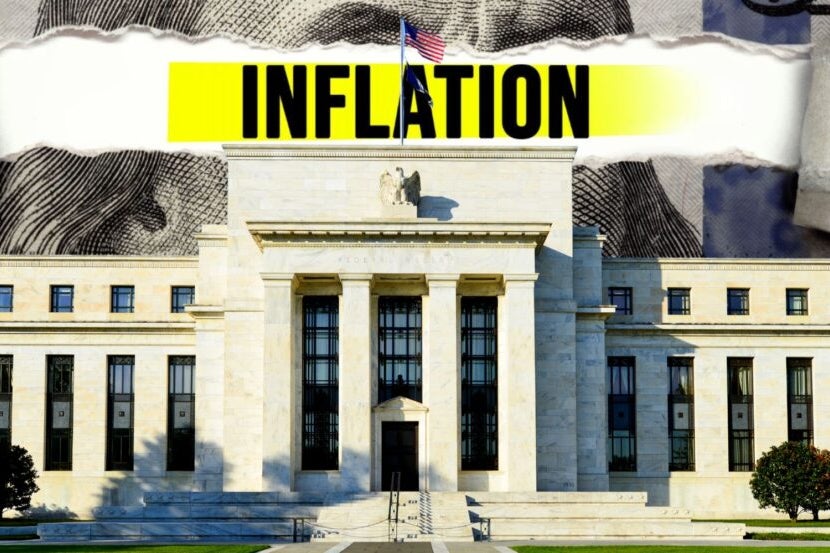“Carefully,” Dude: Powell at the Press Conference
by Wolf Richter • Sep 20, 2023 • 153 Comments
Our drunken sailors “hate inflation, hate it,” and are in a foul mood, but are in good shape and keep spending.
I still have no idea why the Fed has not yet implemented my suggestion – made publicly multiple times in 2023, including
here,
here,
here,
here,
here, and
here – to equip Powell with a Taser that he keeps under the lectern during the post-meeting press conference, and when a reporter asks a stupid, repetitive, or hypothetical question, he pulls it out, aims, ZZZZZAPPP, and “Next question.” That would be immensely helpful and would cut the press conference from the current hour or so, down to 15 minutes.
The Fed today held the top of its policy rates at 5.50%, and the dot plot indicated that there will be one more hike in 2023, to 5.75% at the top, and
in a shocker, it indicated that at the end of 2024, the rate would still be 5.25%, only two rate cuts in 2024, instead of four as projected in June. So that caused a slew of Taser-questions.
“Carefully,” dude.
The key word at the FOMC post-meeting press conference was “carefully.” Powell said it 12 times, and even said, “…proceed carefully,
as I keep saying.” That was Powell’s theme today. The reporters had other ideas.
“We’re in a position to proceed carefully in determining the extent of additional policy firming that may be appropriate,” he said in the prepared remarks to set the tone. And, “Given how far we have come, we are in a position to proceed carefully as we assess the incoming data and the evolving outlook and risks.”
Rates have gone up a lot, and they’ll go up a little more, and once they stop going up, we’re not going to cut them for a while, inflation has come down a bunch from the peak last year but is still way too high, stuff is unpredictable, monthly data bounces up and down, and we’ll just have to wait, but we believe we’re on the right track, and we take our time with the rate hikes and “proceed carefully.”
For markets, the Fed isn’t proceeding carefully enough, though: Late afternoon, the 10-year Treasury yield spiked to 4.41%, in sort of a delayed reaction, and stocks fell broadly after the press conference, with the S&P 500 index down 0.9% and the Nasdaq Composite down 1.5%.
Upward drift of the dots continues.
Today’s dot plot which was part of the Fed’s “Summary of Economic Projections” (SEP), continued the trend that was started in the fall of 2021 that each dot plot is more hawkish than the prior ones, each one projecting higher rates for even longer, and this upward drift of the dots has not been broken yet.
So in the press conference, one reporter after another, from this angle and from that angle, tried to push Powell into saying something dovish about the missing rate cuts, but to no avail. A Taser would have performed miracles. ZZZZZAPPP. “Next question.”
When are rates restrictive enough? “You know ‘sufficiently restrictive’ only when you see it.”
“Real interest rates now are well above mainstream estimates of the neutral policy rate, but we are mindful of the inherent uncertainties in precisely gaging the stance of policy.”
“We are prepared to raise rates further if appropriate, and we intend to hold policy at a restrictive level until we are confident that inflation is moving down sustainably toward our objective.”
“What we decided to do was maintain a policy rate and await further data. We want to see convincing evidence that we have reached the appropriate level, and we have seen progress, and we welcome that, but we need to see more progress before we will be willing to reach that conclusion.”
“Real interest rates are meaningfully positive, and that’s a good thing. We need policy to be restrictive so that we can get inflation down to target, and we are going to need that to be the case for some time.”
“That’s what we need to get to. And we have been moving toward it, and as we have gotten closer to it, we slowed the pace at which we’ve moved. I think that was appropriate. And now that we are getting closer, again, we have the ability to proceed carefully.”
“We understand that it’s a real rate (adjusted for inflation) that will matter, and that needs to be sufficiently restrictive. And, again, you know ‘sufficiently restrictive’ only when you see it. It’s not something you can arrive at with confidence in a model or in various estimates.”
“But let’s say if we get to that level, then the question is how long do you stay at that level, and that’s another set of questions.”
“For now the question is trying to find that level where we think, we can stay there. And we haven’t gotten to a point of confidence about that yet.”
The economy is surprisingly strong: so higher for longer.
“Economic activities have been stronger than we expected, stronger than I think everyone expected, so what you’re seeing is this [policy] is what people believe as of now will be appropriate in order to achieve what we are looking to achieve, which is progress toward our inflation goal as you see in the SEP.
“We have learned all through the course of the last year that actually we needed to go further than we had thought. You go back a year, and what we wrote down, it’s actually gotten higher and higher.” The upward drift of the dots.
“It’s a good thing that the economy is strong. It’s a good thing that the economy has been able to hold up under the tightening that we’ve done. It’s a good thing that the labor market is strong. The only concern, and it just means this, if the economy comes in stronger than expected, that just means we will have to do more in terms of monetary policy to get back to 2%, because we will get back to 2%.”
Why is the economy so strong, despite higher rates? We’re guessing.
“I guess it’s fair to say that the economy has been stronger than many expected given what’s been happening with interest rates. Why is that?”
“One explanation is that household balance sheets and business balance sheets have been stronger than we had understood, and so that spending has held up in that kind of thing. We are not sure about that. The savings rate for consumers has come down a lot. Questions whether that is sustainable. It could just mean that the data effect is later.”
“It could also be that the neutral rate of interest is higher for various reasons. We don’t know that. It can also be that policy hasn’t been restrictive enough for long enough.”
“There are many candidate explanations. We have to, in all of this uncertainty, make policy, and I feel like what we have right now is what’s still a very strong labor market, and there are many candidate explanations. We have to, in all of this uncertainty, make policy.
Where the heck is the neutral rate?
“Stronger economic activity means rates; we have to do more with rates, and that’s what the meeting is telling you. In terms of what the neutral rate can be, we know it by its works.
“It may, of course, be that the neutral rate has risen. You do see [participants] raising their estimates of the neutral rate. And it’s certainly plausible that the neutral rate is higher than the longer-run rate. Remember, what we write down in the SEP is the longer-run rate. It is certainly possible that the neutral rate at this moment is higher than that.”
“And [the possibility that the neutral rate moved higher] is part of the explanation for why the economy has been more resilient than expected.”
Soft landing, ZZZZZAPPP.
When asked if he would call “the soft landing now a baseline, an expectation,” Powell said, “No, I would not do that. I’ve always thought that the soft landing was a plausible outcome, that there was a path to a soft landing. I have thought that, and I’ve said that since we lifted off.”
“It’s also possible that if the path is narrowed, and it has widened apparently, ultimately this may be decided by factors that are outside of our control at the end of the day, but I do think it’s possible, and I also think this is why we are in a position to move carefully, again, that we will restore price stability.”
Then later, Bloomberg News asked, “I was surprised to hear you say that a soft landing is not a primary objective.”
Instead of pulling out his Taser for the nth time today, and ZZZZZAPPP, Powell replied, “To begin, a soft landing is a primary objective, and I did not say otherwise. I mean, that’s what we have been trying to achieve for all of this time.”
External factors: energy prices, strikes, student loan payments, you name it, we got it.
He was asked how list of external factors would impact the Fed and the economy.
“There is a long list, and you hit some of them. It’s the strike, it’s the government shutdown, resumption of student loan payments, higher long-term rates, oil price shock. There are a lot of things that you can look at, and so what we try to do is assess all of them and handicap all of them. Ultimately though, there is so much uncertainty around these things.”
“The strike, the thing about it is it’s so uncertain. We have looked back at history. It could affect economic output, hiring and inflation, but that’s going to depend on how broad it is, and how long it’s sustained for. And it also depends how quickly production can make up for lost production. None of those things are known now. It’s very, very hard to know. So you just have to leave that uncertain.”
If we don’t get inflation under control now…
“The worst thing we can do is to fail to restore price stability because the record is clear on that. If you don’t restore price stability, inflation comes back, and you can have a long period where the economy is just very uncertain, and it will affect growth, it will affect all kinds of things. It can be a miserable period to have inflation constantly coming back, and the Fed coming in and having to tighten again and again.”
“So the best thing we can do for everyone, we believe, is to restore price stability. I think today we have the ability to be careful at this point and move carefully. That’s what we are planning to do.”
The people who are “most hurt by inflation.”
“The people who are most hurt by inflation are the people who are on a fixed income. If you are a person who spends all of your income, you don’t really have any meaningful savings, you spend all of your income on the basics of life, clothing, food, transportation, heating, the basics, and prices go up by 5, 6, 7%, you are in trouble right away; whereas even middle-class people have some savings and some ability to absorb that.”
“It is for those people as much as anybody that we need to restore price stability. We want to do it as quickly as possible. Obviously, we would like the current trend to continue, which is that we are making progress without seeing the kind of increase in unemployment that we have seen in the past.”
The drunken sailors “hate inflation, hate it,” and are in a foul mood, but are in good shape and keep spending.
“It’s a very hot labor market, and you are seeing high nominal wages, and you are starting to see real wage growth [adjusted for inflation] is positive by most measures. So I think overall households are in good shape.”
“Surveys are a different thing. Surveys are showing dissatisfaction, and I think a lot of it is just people hate inflation, hate it. And that causes people to say the economy is terrible.”
“But at the same time they are spending money, and their behavior is not what you would expect from the surveys. That’s kind of a guess at what the answer would be, but I think there is a lot of good things happening on household balance sheets and certainly in the labor market and with wages. The biggest wage increases have gone to relatively low-wage jobs, and now with inflation coming down, you see real wage growth.”








